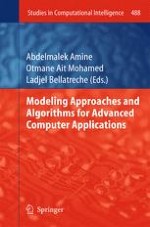
2013 | OriginalPaper | Buchkapitel
New Challenges for Future Avionic Architectures
verfasst von : Frédéric Boniol
Erschienen in: Modeling Approaches and Algorithms for Advanced Computer Applications
Aktivieren Sie unsere intelligente Suche, um passende Fachinhalte oder Patente zu finden.
Wählen Sie Textabschnitte aus um mit Künstlicher Intelligenz passenden Patente zu finden. powered by
Markieren Sie Textabschnitte, um KI-gestützt weitere passende Inhalte zu finden. powered by
Electronic sets operated on aircraft are usually summarized as “avionic architectures” (for “aviation electronic architecture”). Since the 70s, avionic architectures, composed of digital processing modules and communication buses, are supporting more and more avionic applications such as flight control, flight management, etc. Hence, avionic architectures have become a central component of an aircraft. They have to ensure a large variety of important requirements: safety, robustness to equipment failures, determinism, and real-time. In response to these requirements, aircraft manufacturers have proposed several solutions. This article has a twin objectives: firstly to survey the state of the art of existing avionic architectures, including the IMA (for Integrated Modular Avionic) architecture of the most recent aircraft; and secondly to discuss two challenges for the next generation of avionic architectures: reconfiguration capabilities, and integrating COTS processing equipment such as multi-core processors. We believe that these two challenges will be central to the next generation of IMA architectures (called IMA-2G for IMA-2d generation).